Navigating the Journey: A Caregiver’s Guide to Dementia Progression

Dementia is a challenging journey for both patients and caregivers. This comprehensive guide explores the stages of dementia progression and offers practical advice on care strategies, treatment options, and support resources. Learn how to navigate the changes and provide compassionate care throughout the journey.
Navigating Utilization Behavior: A Guide for Dementia Care

This article delves into Utilization Behavior in dementia, offering practical advice for families and caregivers to create a safe environment and mitigate the challenges associated with this condition.
Guiding Loved Ones with Dementia to Use Mobility Aids with Compassion
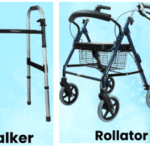
Discover practical and compassionate strategies for encouraging a loved one with dementia to use a cane, walker, or wheelchair. Enhance their safety and quality of life with these tips.
A Comprehensive Guide to Dementia-Induced Psychosis for Hospice Care Providers
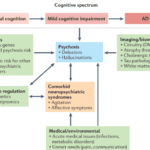
This guide provides hospice nurses, caregivers, and family members with essential information on dementia-induced psychosis, including its signs, symptoms, differentiation from other conditions, and effective management strategies.
Practical Tips for Caregivers: Ensuring Continuous Oxygen Use for Dementia Patients

This article provides practical tips and strategies for caregivers and family members to prevent dementia patients from removing their oxygen nasal cannula. Ensuring continuous oxygen use is essential for their health and well-being.
Caring for Your Loved One with a Foley Catheter: A Step-by-Step Guide
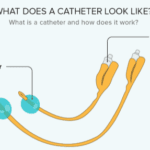
Discover how to provide expert care for a loved one with a Foley catheter. This comprehensive guide, written by a hospice nurse, covers essential steps, common problems, and medication tips. Learn to change tubing, prevent clogging, and ensure comfort during end-of-life care. Empower yourself with the knowledge to support your loved one effectively.
Understanding Invalid Primary Diagnosis Codes for Hospice Claims

Learn about the diagnosis codes not allowed as primary diagnoses on hospice claims. This guide helps hospice agencies ensure accurate billing and optimal patient care.
Caring for Individuals with Chronic Small Vessel Disease (CSVD): A Guide
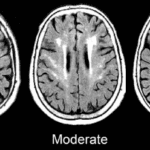
Caring for someone with Chronic Small Vessel Disease (CSVD) can be challenging, but with the proper knowledge and strategies, you can make a significant difference. This guide offers practical advice on creating a supportive environment, managing symptoms, and improving the quality of life for your loved one with CSVD.
Compassionate Companions: The Synergy of Hospice Care and End-of-Life Doulas
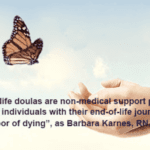
Explore the powerful combination of hospice services and end-of-life doulas in providing holistic care for those facing terminal illness. Learn how these two approaches complement each other to support patients and families through the end-of-life journey.
A Complete Guide to Hiring Caregivers for Terminally Ill Patients

Discover the essentials of hiring caregivers for terminally ill patients. This guide covers caregiver qualifications, assessing understanding of terminal care, and practical hiring tips.
Understanding Blood Work for Terminal Illnesses: A Guide for Caregivers

This comprehensive guide explores blood work for common terminal diseases. Learn which lab tests are necessary for different conditions and how they assist in managing disease progression and treatment. Ideal for caregivers, nurses, and family members.
Understanding Hospice Coverage and Payment in the United States: A Comprehensive Guide

Navigating hospice coverage and payment in the USA can be complex. This article breaks down the key aspects of Medicare, Medicaid, and private insurance coverage for hospice care, helping you understand eligibility, benefits, and costs.
Understanding and Managing Vasovagal Syncope in Terminal Geriatric Patients
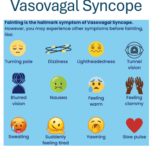
This article explores vasovagal syncope in terminally ill geriatric patients, especially those with cognitive impairments like dementia or brain cancer. It covers prevention, event handling, post-event care, and support for caregivers and family members.
Supporting a Loved One in Denial: Steps to Seek a Dementia Diagnosis

Navigating the process of obtaining a dementia diagnosis for a loved one in denial involves understanding symptoms, preparing for doctor's visits, and participating in testing. This guide offers practical steps for family members to ensure proper treatment and care.
Recognizing the Need for Additional Care: When a Loved One with Dementia Can No Longer Live Alone

Recognizing when a loved one with dementia can no longer live safely alone is crucial for their well-being. This article helps families identify signs and offers practical steps for ensuring safety and care.
Supporting Loved Ones with Immunotherapy-Induced Tremors: A Guide for Hospice Caregivers and Families

This guide helps hospice teams, caregivers, and families support loved ones with immunotherapy-induced tremors. Explore adaptive tools, tremor-reducing therapies, medication options, and practical care strategies to improve quality of life during hospice transitions.
Empowering Advocacy: A Guide to Addressing Elder Abuse in Nursing Homes
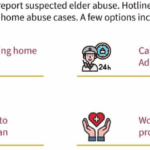
This comprehensive guide provides valuable insights on how to report and prevent elderly abuse in nursing homes. It serves as a resource for families, guardians, and loved ones to understand their roles and responsibilities in advocating for the elderly. Learn how to empower yourself and ensure the safety and well-being of your loved ones.
Understanding Chronic Anemia: A Patient and Family Guide
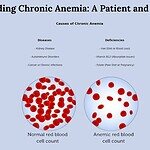
This guide explains chronic anemia in simple terms, covering symptoms, diagnosis, and treatments. Helps patients and families recognize signs and work with healthcare providers.
Navigating Dizziness and Cognitive Decline: A Guide for Caregivers
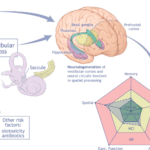
This article delves into the relationship between vertigo and dementia, offering insights for nurses, caregivers, and families to manage dizzy spells and provide compassionate care for those with cognitive challenges.
Innovative Pool Noodle Bed Bumpers: A Caregiver’s Guide to Reducing Fall Risk for Loved Ones with Dementia

Caring for a loved one with dementia can be challenging, especially when it comes to preventing falls. One innovative and inexpensive solution is using pool noodles as bed bumpers. This article provides a comprehensive guide on effectively utilizing pool noodles to create a safe and secure sleeping environment, reducing the risk of falls and injuries. From selecting the right noodles to proper installation techniques, we cover everything you need to know to ensure your loved one's safety and peace of mind.
Beyond Traditional Support: Role-Playing Games as Therapeutic Tools in Hospice Bereavement Care
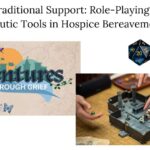
Blue Ridge Hospice's "Adventures in Grief" program uses tabletop role-playing games to help bereaved adolescents and young adults process loss. This article examines this innovative approach, its benefits for grieving individuals and caregivers, and how gamification principles could transform various aspects of hospice care.
What is the Best Hospice Prayer?

Discover the art of crafting hospice prayers that resonate with patients’ beliefs, providing comfort and solace in their final journey. Learn from hospice professionals about personalizing this sacred support.
Navigating the Critical Moments: Stroke and Seizure Response
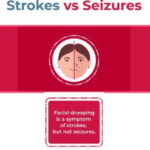
Learn how to recognize and respond to strokes and seizures quickly and confidently. This guide provides essential information on identifying symptoms, taking immediate action, and ensuring patient safety during these critical moments. Empower yourself with the knowledge to act swiftly and potentially save a life.
Recognizing CVA vs. TIA: Essential Guide for Timely Response

Understanding the nuances between a Cerebrovascular Accident (CVA) and a Transient Ischemic Attack (TIA) can be life-saving. This guide helps family members recognize signs, differentiate between CVA and TIA, and respond swiftly to ensure the best possible care.
